Today we’re going to talk about a game that’s been on my list since I was streaming on YouTube: Dishonored. It was described to me as sort of a first-person Assassin’s Creed, so I wanted to give it a try. Let’s see how I liked it.
The idea that Dishonored bears any resemblance to Assassin’s Creed isn’t far-fetched at first: in both games we’re an assassin who has to eliminate one target at a time in order to eventually defeat the villain boss. We (mostly) have the option to choose: either we rush in headlong and kill everything that moves, or we sneak from hiding place to hiding place so as not to be seen in the first place. I’ll write a little more about how this works out later.
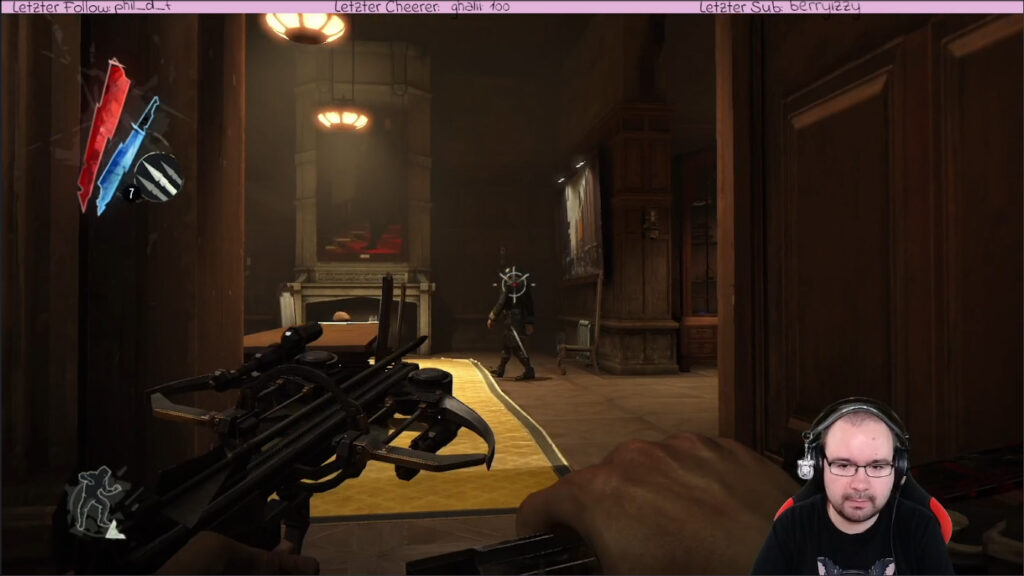
Other similarities are the ability to use different melee and ranged weapons, and special abilities that let us find enemies and important items – but overall I would consider this to be standard for stealth games.
We find the differences mainly in the gameplay, first of all, of course, in the perspective. We consistently play Dishonored in the first-person perspective, which limits our field of view as a player. Furthermore, the game itself is structured differently: instead of an open world, we have different levels that we can access from our hiding place. We don’t have the ability to walk around freely after completing the levels, but we can replay them for certain challenges, such as eliminating the target and nobody else, or not being seen by the guards. There are also collectibles that you can use to unlock new skills or items.
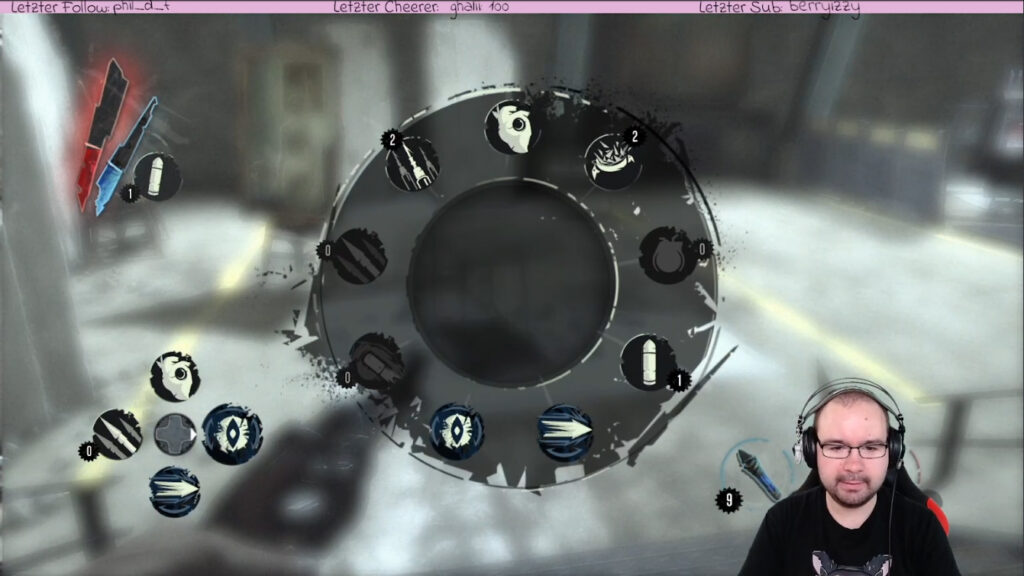
I have to say that these features didn’t interest me that much. I played the game for the story, I only completed or received the various challenges or rewards by pure chance. However, it was also never necessary to complete anything outside of the main missions, so there was no need for grinding as it is in other games.
But what struck me the most about the side missions was how often you run straight towards them. It always seemed like you had a choice to do the side missions; however, the levels were always designed to be quite tubular, making it difficult to walk past them. At the same time, they always made the main missions so much easier that ignoring them wouldn’t have made any sense. It was a bit different with the collectibles, they were well hidden – but I wasn’t interested in looking for them, it wouldn’t have helped me that much.
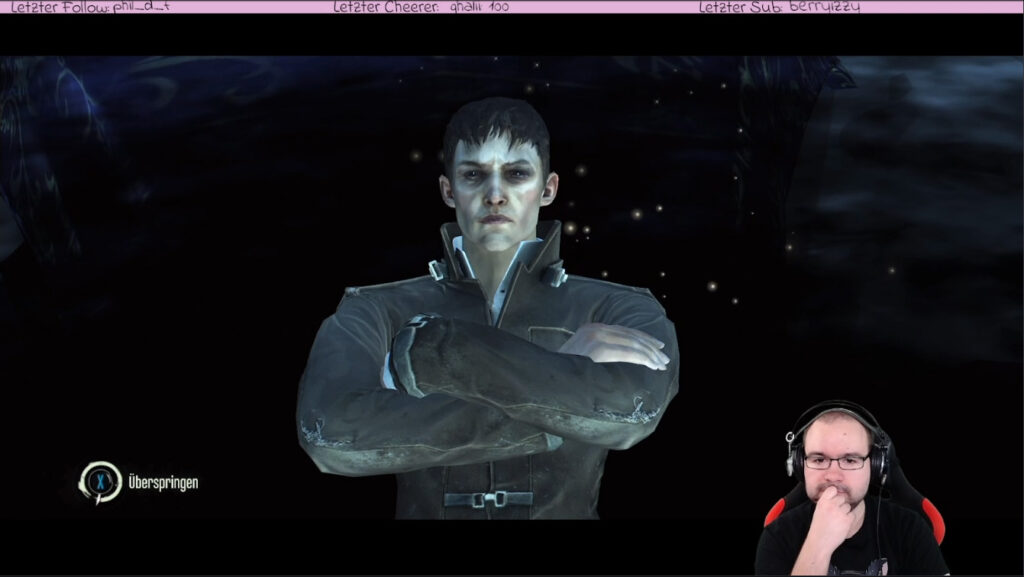
The only thing I regularly stole was cash – we needed this to improve our weapons or to buy ammunition. Since I ran through the levels quite confrontationally, there were always enough corpses to loot here, I never really had a money problems. All this made the game quite enjoyable.
But why are we walking around at all? The story of the first part is told quite quickly: we are the queen’s bodyguard, she is killed by an unknown assassin and we are portrayed as the perpetrator. The Queen’s Daughter is meant to be used to give the evil guy power and we want to prevent that – no more, no less. The story doesn’t win any awards, but it’s quite good enough; we have a goal and we are working towards it. There’s a plot twist or two, but nothing overly exciting.

Now let’s get to the points I didn’t like so much. The first thing to mention is the design of the levels. The fact that these were very tubular was not a big problem; it was easy to work in sections. When you were through one, the next came, until you finally reached your goal, that gave out day some structure. What bothered me, though, was the balance between sneaking and fighting.
There were about three or four levels where you had to sneak for story reasons and weren’t allowed to trigger the alarm – the rest was voluntary across the board. And that’s a good thing, because the direct attack was usually the better choice. Of course you could sneak around three opponents in a quarter of an hour’s action, hope that you won’t be discovered and then try again if you were spotted in an unfavorable position. Or just shoot them down in 5 seconds and run through.
I definitely enjoy a good sneaking game and would have liked to live it out here, but I’m not very resistant to frustration either. In the beginning I tried to rely more on stealth, but I quickly realized that it didn’t make any sense. You waste a lot of time so that in the end cover is not enough or an opponent suddenly changes route and you have to fight – so I discarded that quite quickly. The forced stealth levels were well done, that much I can say. But all the others were only designed for combat. For a game that’s supposed to be specifically about stealth, that’s a bit of a shame.
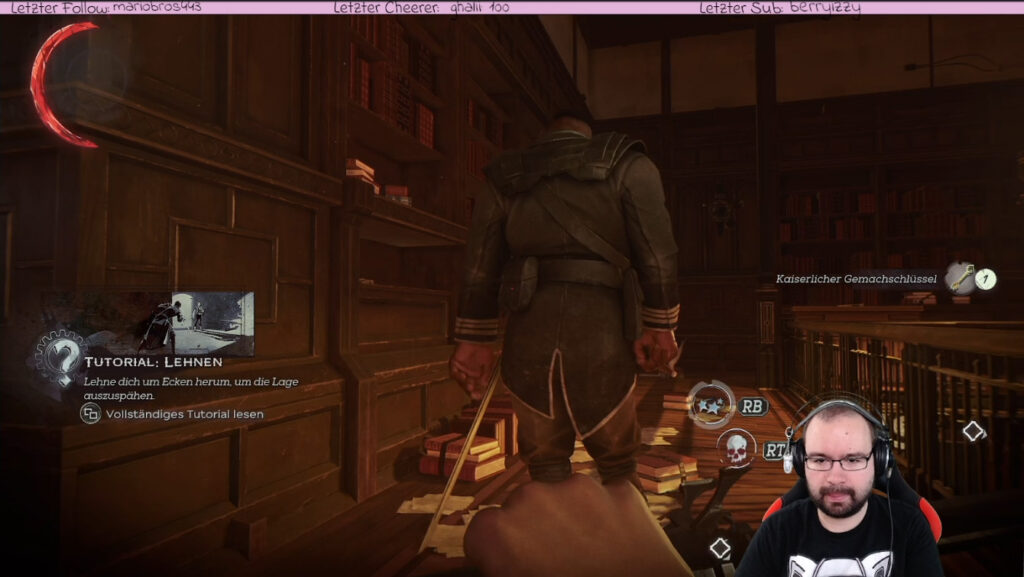
Another point that I found rather unfortunate was the morale system. Depending on how many people you kill or how brutally you do it, the way others see you changes accordingly. At the end of the game this is only reflected in a different text (are we the liberator or the brutal killer?), it has no other visible effects. There should’ve been something with rats, but I didn’t notice that.
Now what’s quite strange is the fact that it doesn’t matter who we kill. Even if a guard is harassing innocent citizens, killing him lowers our morale – I don’t understand that. I mean sure, it could lift it less than if we just knocked the guard out, but the system doesn’t differentiate that much. Especially because of the levels that were made more for fighting, I had my difficulties staying on a good morale level.
Especially because of these two points, the game had a big problem for me: I found it rather trivial. The characters in the game didn’t particularly appeal to me either, so their survival or betrayal wasn’t particularly important to me. It was more like running down alleys and stabbing people than a game that really got me hooked. Even the quite complex background story, which was mainly told through documents in the game world, couldn’t fix that – too bad.
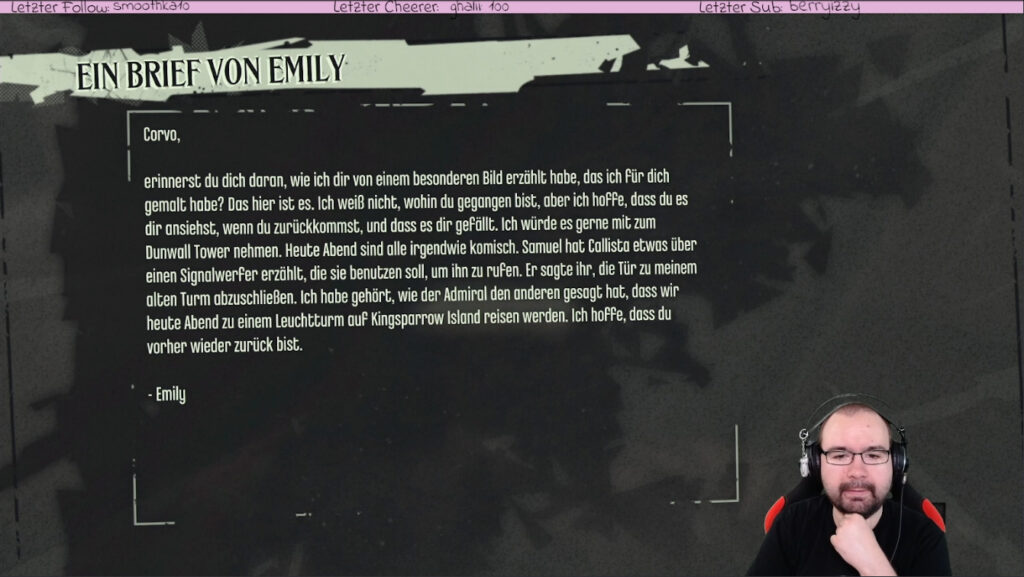
What is my conclusion about this game? Well, it’s not bad. It worked technically perfectly, the controls were precise and when we climbed or sneaked, the game mechanics were never the problem, but rather the design of the world. If I had more patience with sneaking and if I tried it again more often, I could probably enjoy it – but it’s definitely not a game for me.
We therefore aborted the second part relatively quickly when we realized that it is practically the same as the predecessor. This may be good news for fans of the first part, but unfortunately it lost me because of it. So all in all I can say: if you like the principle, play it. If you’re like me, I wouldn’t recommend it.
What do you think? Did you like the game, have you played it yourself or are you planning to? Would you try to collect all achievements? Join the discussion on Discord!